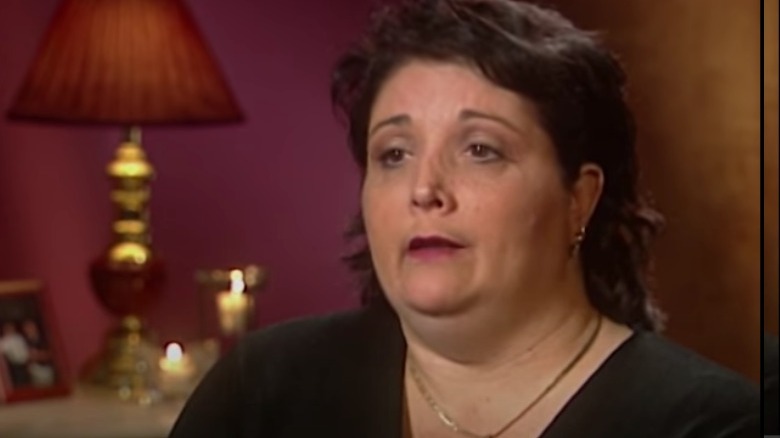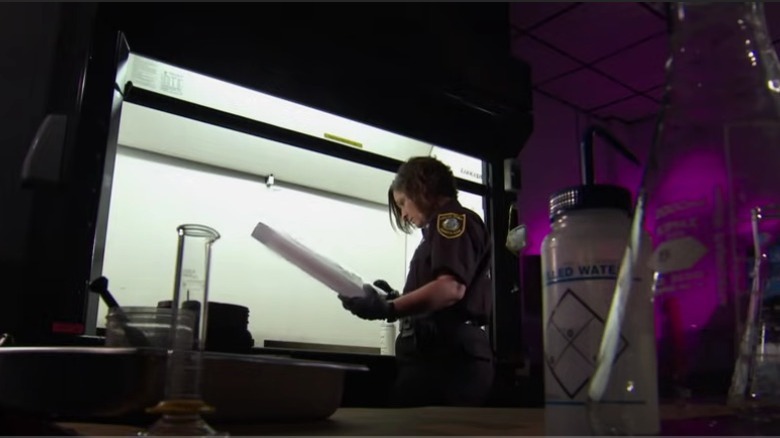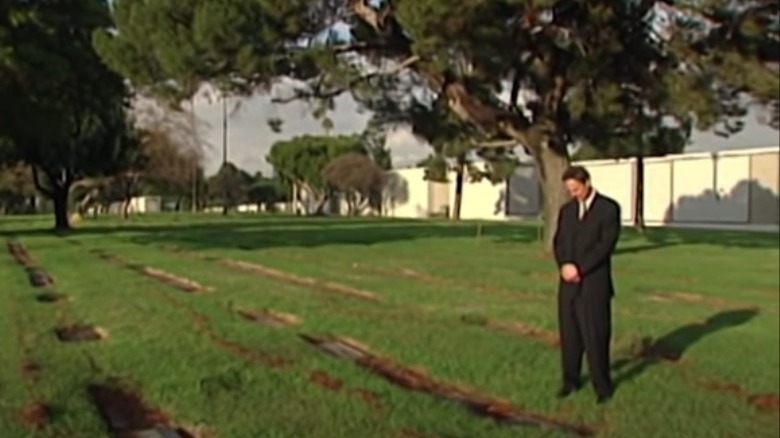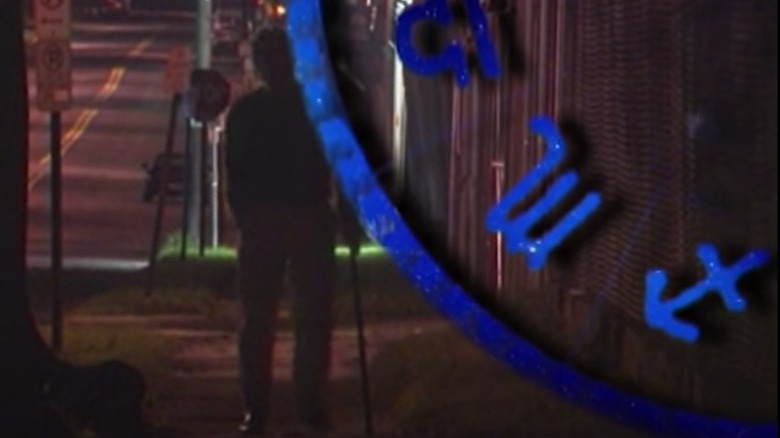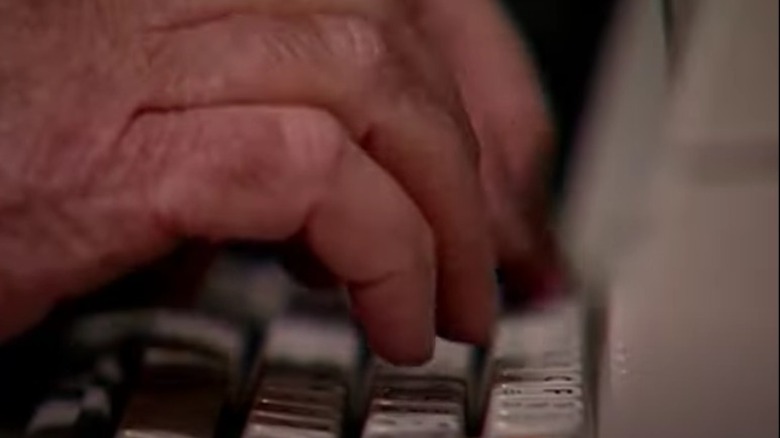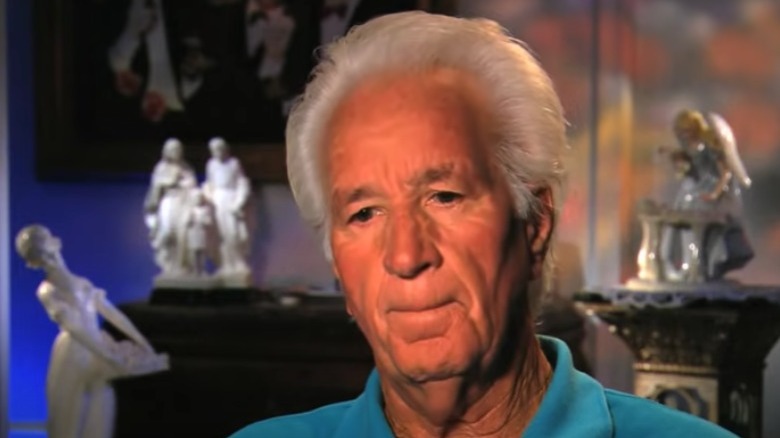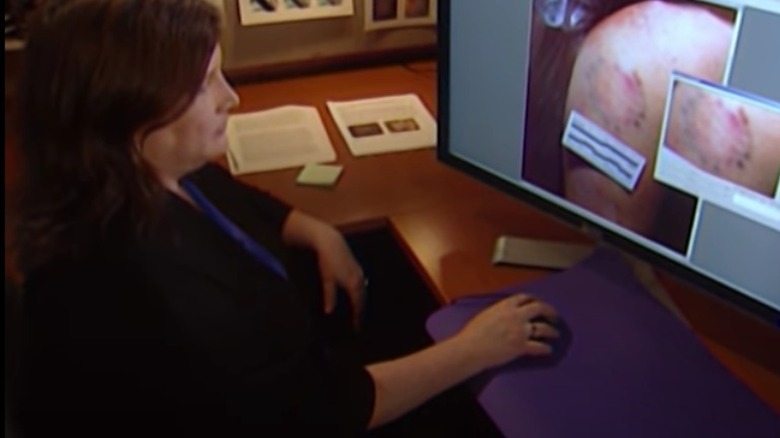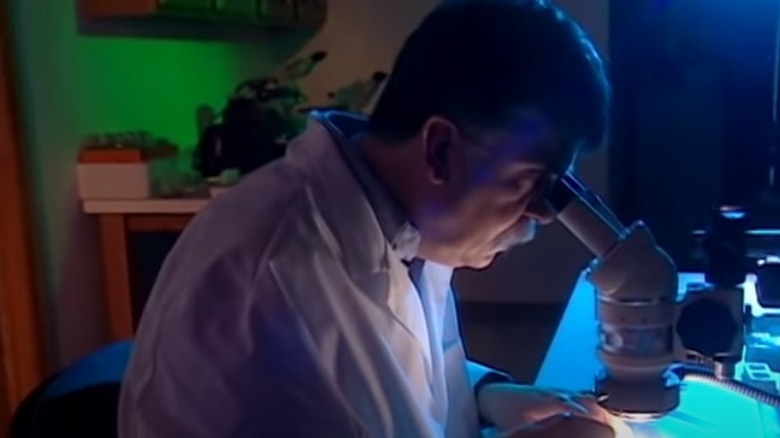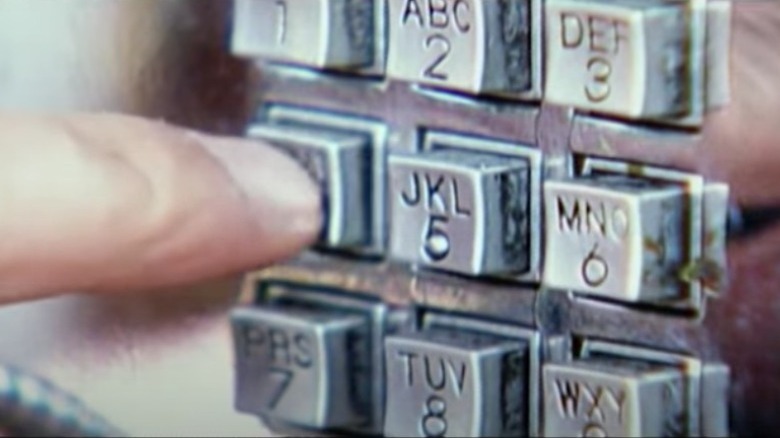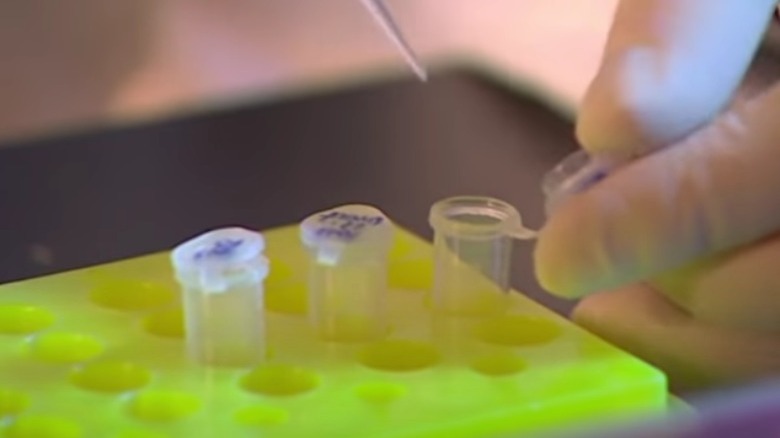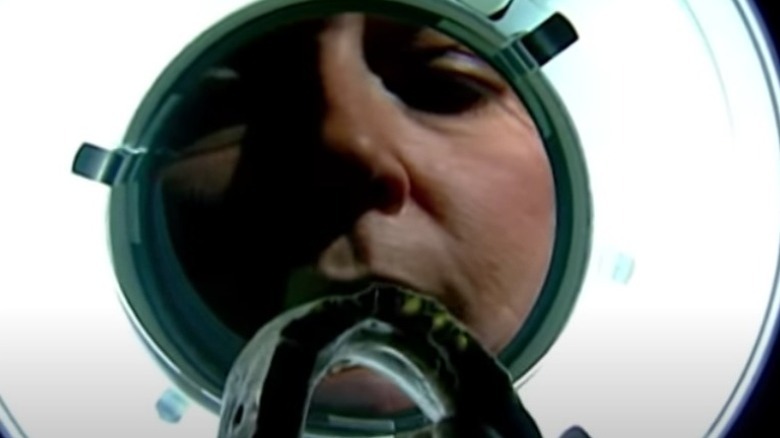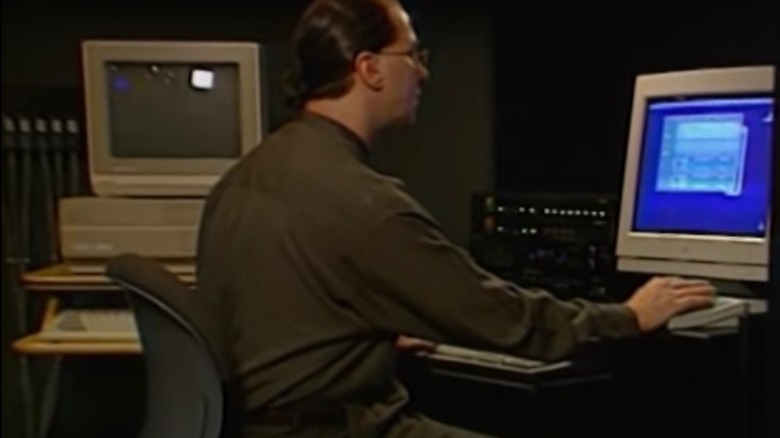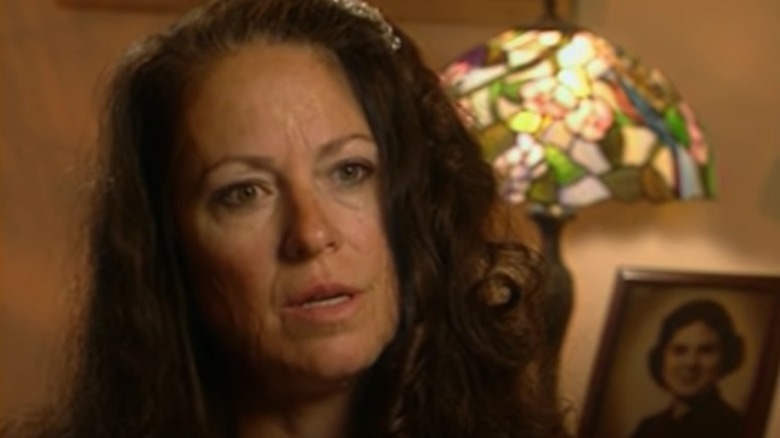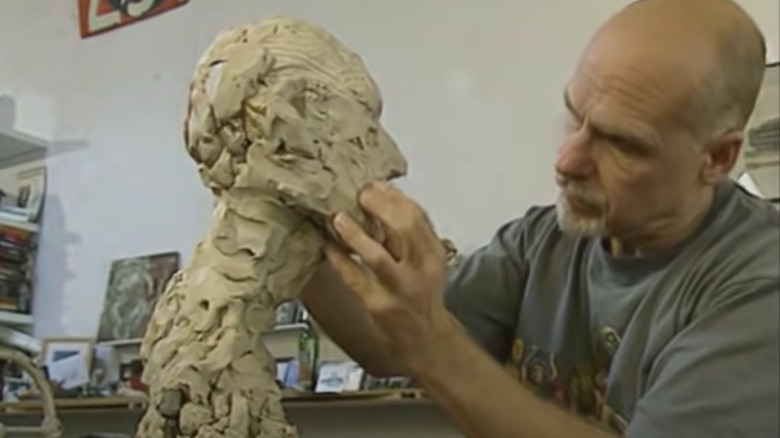25 Best Forensic Files Episodes, Ranked
The world of forensic science is constantly evolving and has become the subject of multiple television series throughout the years. True crime is a fast-growing genre that shows no signs of slowing down, and fans wouldn't have it any other way. One of the longest-running true crime docuseries is "Forensic Files," which aired from 1996-2011 before being revived a few years later. This series illuminates the inner workings of forensic investigations with an engaging balance of education and entertainment. Episodes are short, fast-paced, and packed with expert interviews and real crime scene footage. Additionally, concise narration and convincing dramatic reenactments bring complex criminal cases to life.
Every episode of "Forensic Files" explores a variety of forensic specialties such as document analysis, graphology and forensic sculpture. Throughout the series, audiences meet passionate law enforcement officers and talented forensics experts, who work together to give victims and their families peace. Though the revival series, "Forensic Files II," has taken the beloved show in exciting new directions, the best episodes of the original "Forensic Files" represent everything that makes this series — and the true crime genre — so well-loved by fans.
Bad Medicine (Season 9, Episode 8)
"Bad Medicine" retells the harrowing story of Dr. Anthony Pignataro. A healthy dose of suspense keeps viewers guessing and has earned this episode of "Forensic Files" a 7/10 rating on IMDb. The case made worldwide news because of the classic motives behind the crime: money and revenge. According to The Orlando Sentinel, Dr. Pignataro was a plastic surgeon who invented the snap-on toupee. However, the invention he's best known for now is a murder plot against his own wife.
Dr. Pignataro lost his medical license due to the death of a patient, Sarah Smith. Rather than try to rebuild his life, Dr. Pignataro attempted to frame Smith's family by vandalizing his own home and repeatedly poisoning his wife with arsenic. Miraculously, Mrs. Pignataro survived, and investigators determined the exact dates of the poisonings by examining strands of her hair. This excluded any of Sarah Smith's family members as suspects and earned Dr. Pignataro a lengthy prison sentence. However, Dr. Pignataro never truly learned his lesson. According to WKBW News, he legally changed his name and resurfaced in South Florida, trying to practice medicine once again.
Payback (Season 15, Episode 1)
Twenty-year-old Bobby Kent was a violent bully, but his murder was nothing short of overkill. He was stabbed, beaten, and dumped in the Everglades by seven of his supposed friends in suburban south Florida. The brutality of the crime and the sensational nature of the case still fascinate true crime fans today. The case inspired a novel called "Bully: A True Story of High School Revenge," which later received a film adaptation. "Payback" ran as an hourlong special — a rarity for "Forensic Files" — and delved into the disturbing backstory of this famous case.
Among the most memorable aspects of this episode is the wealth of expert interviews. This includes extensive commentary from the "Bully: A True Story of High School Revenge" author himself, Jim Schutze. However, the most surprising interviewee was Derek Dzvirko: Case documents from casetext.com list Dzvirko as one of the teenagers who participated in the murder and received an eleven-year sentence. His interview segments give "Payback" even more gravity because of his chilling first-hand insights, and "Forensic Files" fans gave this episode a 7.3/10 on IMDb.
Writing on the Wall (Season 13, Episode 36)
Audiences gave this "Forensic Files" episode a 7.4/10 rating on IMDb, and it's easy to see why — the case features multiple suspects and an elaborate attempted coverup. Some killers evade capture by carelessly putting someone else's freedom at risk to maintain their own. Luckily, forensic clues in this case resulted in justice for the victim, airline customer service representative Karen Pannell. After sustaining multiple stab wounds, Karen scrawled the name of her former boyfriend in her own blood on a wall just before dying. Or did she?
An important clue cemented investigators' suspicions that the handwriting was fake: Karen was left-handed, but she had blood on the fingertips of her right hand instead. Investigators excluded her former boyfriend as a suspect but didn't have to look far to find the actual killer: Her most recent boyfriend, Tim Permenter, was a felon 16 times over. Karen ended the relationship after learning about his past, but Tim wasn't going to take "no" for an answer. In retaliation, he murdered Karen and used the bloody handwriting as a ruse to throw law enforcement off his scent.
Southside Strangler (Season 1, Episode 6)
This riveting episode of "Forensic Files" covers a landmark case that represented a turning point for the American justice system. According to Style Weekly, Timothy Spencer, aka the Southside Strangler, became the first American serial killer convicted based on DNA profiling. Without this DNA profile, investigators may never have captured him. His crimes spanned a hundred miles, and he showed an impressive amount of meticulousness — he left no footprints or fingerprints at any of the crime scenes. Furthermore, in Arlington, Virginia, a man named David Vasquez wrongfully confessed to the first five murders.
However, an FBI psychological profile led investigators to Spencer, and DNA evidence exonerated Vasquez. Eventually, Spencer received a death sentence for his crimes. According to The Roanoke Times, Spencer's attorneys unsuccessfully tried to challenge the DNA evidence after his conviction. "Southside Stranger" has an IMDb rating of 7.5/10 and gives viewers a fascinating look at forensic developments in the 1980s. It's one of the most heavily science-focused episodes of the first season, setting a standard for the rest of the series.
Marked for Life (Season 10, Episode 2)
Cold cases are compelling to many true crime fans, especially those that finally get solved. "Mark for Life," rated 7.6/10 by IMDb reviewers, tells the story of a cold case that dragged on for a staggering 46 years. In the 1950s, Gerald Mason stole a car from a group of teenagers and murdered two police officers while fleeing the scene. The episode thoroughly reviews the limited evidence law enforcement had available at the time and reveals the scientific advancements that eventually brought the case to a close.
Police found small clues over several years, including partial fingerprints, a piece of a handgun, and some eyewitness testimonies. Unfortunately, these clues didn't add up to a likely suspect. Mason's use of a pseudonym further complicated matters, and it seemed like law enforcement would never bring the killer to justice. It wasn't until 2002 that police revived the case and used advanced computer technology to re-analyze the partial prints from the original crime scene. The fingerprint led police to Mason's doorstep, and he received a life sentence for his crimes.
Sign of the Zodiac (Season 8, Episode 15)
In the 1960s, the Zodiac Killer made national headlines and gripped the west coast with terror. In the 1990s, New York City had its own version of a "zodiac killer," though this killer's name was far more literal. Heriberto "Eddie" Seda murdered three victims after promising to kill one person for each astrological zodiac sign. Like the west-coast Zodiac Killer, he sent letters to local media sources, demonstrating advanced knowledge of astrology and using a cipher in some of his letters. This cipher initially led investigators to fear that the two Zodiacs were the same man. However, graphologists determined that the New York murderer was only a copycat.
Investigators cracked the case using partial fingerprints and a saliva sample from a licked envelope. However, the event that truly sealed the killer's fate was the impulsive shooting of an unlikely victim: his own sister. Seda received a sentence of over 200 years in prison for his collection of offenses. IMDb reviewers gave this episode a 7.6/10 rating. One of the most interesting aspects of "Sign of the Zodiac" is its inclusion of several different scientific disciplines — graphology, astronomy, and cryptography.
Point of Origin (Season 9, Episode 26)
This Season 9 episode covers a crime featured less often than others on "Forensic Files." A dangerous arsonist attacked Southern California in the early '90s, causing dozens of fires in broad daylight. However, clues were few and far between due to the extent of the fires. One of the only initial clues was a tiny scrap of paper wrapped around cigarette butts. Duplicates of this makeshift incendiary device also turned up at other fire sites, and luckily, forensics experts found a fingerprint on one of them.
"Point of Origin" has an IMDb rating of 7.7/10, based on user reviews. One exciting aspect of this episode is the massive twist in the case: An arson investigator who studied the fires believed another arson investigator was behind them. Initially, no one believed his theory. He requested that investigators test the fingerprints of arson investigators against fingerprint evidence from one of the incendiary devices, but the ATF denied this request. It would take seven years and many more fires before police finally investigated the fingerprint records. Amazingly, they found a match: John Leonard Orr, an arson investigator who wrote a novel manuscript about his own crimes.
All That Glitters Is Gold (Season 13, Episode 32)
"All That Glitters Is Gold" introduces audiences to one of the greatest mysteries in the series. Southern California police found an abandoned car riddled with bullet holes on the side of a road. Only a cell phone and a shoe were left to identify the driver, Megan Baroso. Based on body damage, police concluded that someone intentionally ran the vehicle off the road before shooting at it with a powerful assault rifle. Unfortunately, Baroson was nowhere in sight, and investigators couldn't be sure if she was dead or alive until much later in the investigation.
The forensic experts featured used lasers to mimic the bullet trajectories, a fascinating technique that showed the shooter's exact location at the time of the attack. They also determined that Megan was most likely alive after the shooting. Even with all this information, finding Megan's remains took an entire month. In the end, investigators solved her murder by analyzing a minuscule clue: trace amounts of red glitter found in the victim's hair matched glitter found in the killer's truck. With an IMDb rating of 7.7/10, it's clear that many "Forensic Files" fans were riveted by this episode.
The Buddhist Monk Murders (Season 15, Episode 13)
In 1991, a mysterious gunman entered a Buddhist temple in Arizona and gunned down everyone inside. Local investigators were overwhelmed by the long list of potential suspects, including members of the KKK and the Bloods street gang. The temple was relatively secluded from nearby Phoenix by design, and the residents were not known to interact with neighboring residents other than allowing local Buddhists to attend religious services. According to ABC 15 News, the attack on nine of the temple's monks was the worst mass murder Arizona had ever experienced. "The Buddhist Monk Murders" ran as an hourlong special due to the complex nature of the case.
IMDb reviewers have given this episode an average rating of 7.7/10. The thoroughness of the storytelling is a major draw, especially because of the multiple twists and turns along the way. Massive pressure from the US and Thai governments led to FBI involvement in the investigation. In addition to the murders themselves, this case involved another unfortunate tragedy: a rush to judgement resulted in four wrongful arrests and unverifiable confessions. According to The Los Angeles Times, the "Tuscon Four" were later released and cleared of any wrongdoing connected to this case. Amazingly, the entire massacre was committed by two teenagers: 17-year-old Johnathan Doody and 16-year-old Alex Garcia. Both received life sentences for their involvement in the crimes.
Lights Out (Season 13, Episode 48)
Kathy Martin was a young mother who was found dead in her suburban Texas home under mysterious circumstances. Her young daughter sustained severe injuries but miraculously survived the attack. Unfortunately for investigators, the four-year-old remembered some details of the crime but couldn't identify her mother's killer. The victim's brother-in-law became a prime suspect, but no conclusive evidence connected him for the crime; even after a thorough review of the wealth of available forensic evidence, the case went cold.
Eleven years later, investigators relied on DNA to identify a suspect and discovered that the previously-suspected relative was among the two percent of people who could have committed the crime. Still, it took another four years and an unusual source of skin cells to finally convict Kathy's brother-in-law. Investigators uncovered DNA on Kathy's neck, indicating that the perpetrator had strangled her. The reenactments featured in "Lights Out" are among the best in the later seasons of the beloved series. "Forensic Files" fans gave this episode a 7.7/10 rating on IMDb.
Sharper Image (Season 12, Episode 1)
Wrongful convictions have plagued the American justice system since its inception, but forensic science has come a long way in reducing the instances of these tragic mistakes. For example, in the late 1990s, police accused two different men of murdering their neighbor, nine-year-old Sharra Ferger, but thanks to forensics, the right person went to jail instead. "Sharper Image" covers the story of Sharra's murder, the forensic evidence that cleared her neighbors' names, and the unfortunate truth behind the crime. With an IMDb rating of 7.8/10, "Sharper Image" clearly has true crime fans' approval.
The forensics in this case involved an organization that goes far beyond the earth's surface: one suspect's lawyer reached out to NASA for help with photographic enhancement of a bite mark, which cleared the lawyer's client and pointed investigators to the real killer: Sharra's uncle, Gary Cochran. Cochran and his accomplice, Steven Cannon, were handed life sentences for the crime. However, according to WTSP News, recently discovered DNA evidence has opened the door for Cannon — just 17 at the time of the murder — to appeal his conviction. The story of Sharra Ferger's murder is far from over.
Badge of Betrayal (Season 9, Episode 20)
San Diego native Cara Knott was found dead under a highway overpass. Investigators meticulously searched her car for clues but located next to nothing in their original search. Her death was violent, but the motive and perpetrator were a complete mystery at the investigation's outset. Cara's boyfriend immediately became a person of interest when police discovered that he was the last person to see her alive, but Crime Stoppers tips quickly led law enforcement toward one of their own: a distinguished veteran Highway Patrol officer named Craig Peyer. Several women complained of improper traffic stops involving Peyer, many of which occurred where investigators found Cara Knott's body.
At first, it appeared that Peyer had a solid alibi. However, when a criminalist examined Peyer's uniform on the night of Cara's murder, he discovered a crucial clue — a shoulder patch on the uniform had unique gold edging. Upon microscopic analysis, the criminalist concluded that the fiber was extremely rare and, more importantly, matched one found on Cara's clothing. Furthermore, some purple fibers found on Peyer's boots matched those from Cara's clothing. These fiber matches were instrumental in solving this surprising crime and sealing the fate of a crooked police officer. IMDb reviewers rated this compelling episode a 7.8/10.
Last Will (Season 7, Episode 52)
This episode of "Forensic Files" feels like a movie because of the intense drama surrounding the case. "Last Will," which has an IMDb rating of 7.8/10, details a harrowing kidnapping and murder that occurred in 1985 when a South Carolina teen named Shari Smith was abducted. Her kidnapper taunted her parents and law enforcement with cryptic phone calls, ultimately forcing Shari to write her own last will and testament before murdering her. That two-page document arrived at her parents' local post office the next day, when it was already too late to save her.
Even after Shari's family received the letter, the killer continued to taunt them with calls from a local pay phone. Finally, one of the killer's calls gave the investigators information that led to her parents' worst nightmare: the location of Shari's corpse. Clues at the scene suggested that the killer was criminally sophisticated and dangerous, and investigators knew they had to work fast to find clues about their identity. In the meantime, the killer continued to call the grieving parents periodically. Finally, a forensic expert thoroughly examined Shari's letter and found an incredible clue: On the back of Shari's note, there was trace evidence of a partial list of phone numbers. Eventually, tracking those phone numbers led to the killer, Larry Gene Bell. According to AP News, his sentence for the crimes was execution via electric chair.
The Day the Music Died (Season 12, Episode 7)
Celebrity deaths are always big news, especially when they occur under mysterious circumstances. The Gits, a Seattle-based rock band, lost their lead singer Mia Zapata in 1993 when investigators found her strangled to death in a seedy part of the city. The medical examiner assigned to the case immediately knew who she was, and news of her death soon hit the media. Because of limited forensic evidence, her murder slipped into the realm of cold cases, and the evidence ended up frozen in storage. Ten years later, forensic experts tested the frozen samples for DNA — and finally found the killer.
IMDb reviewers gave "The Day The Music Died" a 7.8/10. One of the episode's strengths is the wealth of unusual details about the victim and the groundbreaking advances in DNA that led investigators to her murder, but one of the most memorable elements from this episode is a bizarre piece of music history. According to an interview in the episode, Zapata wrote a song entitled "The Sign of the Crab" just a few months before her death. The song is about a serial killer, and some of the lyrics eerily reflect her eventual fate.
A Voice from Beyond (Season 5, Episode 4)
Some secrets stay buried for decades, and one such secret is at the heart of "A Voice from Beyond." When the Cohen family moved out of their home in Jericho, New York, they found a large barrel in their house's crawlspace. Inside, police discovered the mummified corpse of a pregnant young woman. Investigators estimated that the body had been in the barrel for at least 30 years and had very little forensic evidence to go on. Luckily, a few of the woman's personal effects were in the barrel with the body, including an address book.
Thanks to a forensic document analyzer, investigators salvaged bits of information from the mostly destroyed book, which helped identify people who might have known the mystery woman. An anonymous tip about the barrel also provided a lead on where it came from: a plastics factory from the 1970s. Police tracked down a former plastics executive named Howard Elkins, who refused to provide a DNA sample. Elkins committed suicide soon after the police visited him, and investigators took a blood sample after his death. As it turned out, Elkins was the father of the mystery woman's baby. "Forensic Files" fans gave this episode a 7.8/10 rating on IMDb.
Seedy Intentions (Season 13, Episode 19)
This episode features the use of a very unorthodox crime-solving tool — clairvoyance — in a case that found Washington investigators enlisting a local psychic's help to find a nine-year-old girl named Cindy who disappeared from her neighborhood while the community was celebrating the Fourth of July. The psychic had a vision of the girl's location and drew a map for law enforcement, and amazingly, the vision was accurate: the police found Cindy's body exactly where the psychic said it would be.
The unique nature of this case plays a role in the episode's 7.9/1 IMDb rating. However, the balance between real-life footage and dramatic reenactments is also a strong point for "Seedy Intentions." Cindy's mother was initially the primary suspect in the case, and some of the interviews shown in the episode make it easy to see why police thought she might be involved. However, the victim's younger sister gave investigators a clue that pointed to a suspicious local man in his 30s who kept the company of young children. Thanks to a forensic botanist's work, investigators could confirm that this dubious neighbor was responsible for the crime.
Something's Fishy (Season 2, Episode 9)
This "Forensic Files" episode digs into the case of a woman named Sue Snow who died under mysterious circumstances. A medical examiner's assistant detected the unmistakable smell of cyanide during Sue's autopsy, and investigators then made a frightening discovery in Sue's kitchen: a bottle of tainted Excedrin. According to The New York Times, Excedrin immediately recalled their products in case of widespread contamination. Sue's husband was briefly a suspect, but police looked in a different direction when another local woman, Stella Nickell, claimed that her husband had also taken Excedrin shortly before his death.
Evidence of an additional victim led law enforcement to believe that a random killer was on the loose, perhaps a copycat of the unsolved Tylenol Murders in Chicago. However, close forensic analysis of the contaminated Excedrin pills revealed chemicals found in aquarium algaecide, a crucial clue to the suspect's identity. One of the investigators working on the case remembered a vital detail: Nickell's home had an aquarium. In the end, Nickell was convicted of the murders of Sue Snow and her husband Bruce. IMDb reviewers gave this complex episode a rating of 7.9/10. The case is so compelling that it's been featured on several other crime shows since this episode aired.
A Daughter's Journey (Season 9, Episode 16)
A young Kentucky woman named LaLana spent most of her life haunted by the mysterious death of her mother, Marlene Major. It was as if Marlene simply disappeared, leaving most of her belongings behind. Her disappearance faded into a cold case soon after it occurred, and Marlene's three children grew up believing their mother had abandoned the family. Finally, a 20-year-old diary entry shed light on a dark family secret that LaLana was determined to pursue. "A Daughter's Journey" has a 7.9/10 rating on IMDb, and Lalana's heartbreaking search for the truth makes this a queasily compelling episode.
Even with little more than unfounded suspicions and scraps of evidence, LaLana honored her mother's memory by relentlessly hunting for her killer. She discovered that her mother was aware of abuse that she and her brother suffered at the hands of their father, and she believed that this knowledge led to her mother's death. Her tireless efforts finally paid off when mitochondrial DNA tests identified a mysterious skull as that of Marlene Major. LaLana is a true testament to the strength and tenacity of many victims' families and gives audiences a grim yet inspiring perspective on this case.
Invisible Intruder (Season 4, Episode 1)
A woman named Darlie Routier and her two young boys were attacked in their home in Dallas, Texas in 1996. Darlie survived, but both of her sons died from their wounds. From the start, Darlie claimed that an intruder was responsible for the vicious crime, but her story was very suspicious to investigators. Her husband, Darin, exhibited equally bizarre behavior in the aftermath of his children's deaths. As the investigation unfolded, all of the evidence pointed to an unthinkable conclusion: Darlie Routier murdered her sons and staged her own attack. "Invisible Intruder" has an average rating of 7.9/10 from IMDb reviewers.
Though Darlie Routier has been on death row in Texas for 20 years, her fate isn't sealed just yet. Darlie has proclaimed her innocence multiple times since her conviction, and new evidence just might exonerate her. According to the Altoona Mirror, Darlie's legal team is awaiting the results of new DNA tests, and are hopeful that the results will shed light on her possible innocence. For true crime fans that like to stay up-to-date on legal news, this episode of "Forensic Files" is an excellent introduction to a case that is still evolving today.
Family Ties (Season 13, Episode 25)
"Family Ties" has an IMDb rating of 8.0/10 and tells the shocking story of a brutal crime against a New York family. Peter and Joan Porco were attacked with an ax in their own home, resulting in Peter's death and near-fatal injuries for Joan. Peter's death was slow, painful, and suggested intense malice from the killer. However, despite three blows to the head, Joan miraculously survived the attack. Though she couldn't speak at first, Joan communicated to the police that it was likely her son, Christopher, who attacked her and her husband.
At first, investigators couldn't find any compelling evidence against Christopher, who had a convincing alibi. As a New York Supreme Court justice, Peter Porco had his fair share of potential enemies that could've been responsible. A supposed killer even sent a typed letter to police claiming responsibility for the murder, giving police yet another lead to follow. One major highlight of this episode is the expert interviews in which investigators explain their thought processes while sifting through these leads. However clever Christopher may have thought he was, these seasoned investigators put enough pieces together to issue a warrant for his arrest. Christopher Porco received a sentence of 25 to life for his crimes.
Haunting Vision (Season 4, Episode 11)
Losing a parent is one of the worst tragedies a child can experience, and the loss of her mother haunted Lori Romaneck for decades. Dianne Keidel disappeared in 1966, and her murder remained unsolved for 27 years. Investigators noted that Dianne took almost none of her personal effects with her, and those close to Dianne claimed that she would never have left town without her children. In a bizarre twist, the man Dianne met the night she disappeared died from a heart attack the very next day.
In an even more bizarre twist, a house fire nearly claimed the lives of Dianne's children not long after her death. Sadly, Lori's older sister, Suzie, died in the fire trying to protect her. Lori's other sister, Kelly, died as well. It took another two decades for Lori to have the courage to approach law enforcement with a dark family secret: Lori witnessed her father beat her mother to death when she was only five years old. She also claimed that her father buried her mother in their family's backyard and poured concrete over the grave. Investigators found Dianne Keidel's body exactly where Lori said it was buried. "Haunting Vision" has an IMDb rating of 8.1/10.
Water Logged (Season 14, Episode 11)
When a family of three tourists suffered a gruesome fate on a Tampa Bay vacation, local officials raced to find their sadistic killer. Unfortunately, the bodies stayed submerged in the bay for several days, which degraded most forensic evidence; if not for a hotel manager with a good memory, law enforcement might never have identified Joan Rogers and her two daughters. A local resident with a long record of violent crimes was named the primary suspect based on a handwriting sample.
"Water Logged" presents a truly compelling mystery, which investigators solve with a series of tiny clues. The episode also gives audiences an inside look at a unique forensic specialty. It details the work of a handwriting expert who used her graphological skills to identify the killer's handwriting on a note in the family's hotel room. Later, the same expert matched that handwriting to a sample the suspect's former employer provided, thus proving his identity. Her work was instrumental in securing a conviction in this case. "Forensic Files" viewers gave this episode an average of 8.1/10 on IMDb.
Dirty Little Secret (Season 13, Episode 47)
Some cases become so sensational that they capture national attention. The disappearance of Josh Ford and Geney Crutchley is one such case, and it's the subject of "Dirty Little Secret." This episode is rated 8.2/10 on IMDb, and features some classic themes, including love, mystery, and murder.
Ford and Crutchley vanished during Memorial Day weekend in Ocean City, Maryland. They were both very dedicated to their respective jobs, so friends and coworkers were suspicious when neither one returned to work after the holiday. The couple was last spotted at a nightclub before vanishing, and they'd left most of their belongings behind in their vacation rental.
Through interviewing potential witnesses, investigators discovered that another couple, Benjamin and Erika Sifrit, might have been responsible for the pair's disappearance. Inside the Sifrits' Jeep, police found Ford and Crutchley's driver's licenses. More of their belongings turned up in the Sifrits' condo, as well as a photo of Ford and Crutchley on their last night alive. To the horror of everyone involved in the case, forensic evidence revealed that the Sifrits had murdered Ford and Crutchley in their condo, dismembering and disposing of their bodies. The Sifrits turned on each other at the trial, and each received lengthy prison sentences.
Bad Blood (Season 6, Episode 18)
This aptly named episode has an 8.2/10 rating from IMDb users, placing it among the most well-liked episodes in the series. What's fascinating about "Bad Blood" is not the forensic science, but Dr. John Schneeberger's incredible efforts to avoid capture. The small-town Canadian doctor was accused of drugging and assaulting a patient named Candy. As a respected member of his community, Dr. Schneeberger quickly gained support from local residents, many of whom thought Candy was simply lying. Eager to clear his name, the doctor submitted a blood sample for a DNA test, and it wasn't a match for DNA collected after the crime.
However, Candy was sure that the DNA test results were wrong. She publicly accused the doctor of tampering with the test, so he agreed to submit a second sample. Once again, the DNA from his blood didn't match the crime sample. After Schneeberger was compelled to give a third sample via court order, police got their first clue that something was wrong: When a lab tech tried to draw blood from the doctor's left arm, none came out. After several tries, she obtained a small sample, but noticed something peculiar — the blood wasn't fresh. Investigators discovered that Dr. Schneeberger had outsmarted them all. To avoid being identified as a match for the crime scene DNA, he'd implanted a vial of another patient's blood inside his own arm. Prosecutors eventually convicted him of assaulting Candy and one additional patient.
The List Murders (Season 1, Episode 12)
"The List Murders" is the highest-rated episode of "Forensic Files" on IMDb, with an average rating of 8.6/10. It features an utterly sensational mass-murder case that investigators solved with the help of true-crime TV and a little-known form of forensic art. The episode lays out the finer details of the List family dynamics in 1971, including family photos and pictures of the original home — an introduction that gives viewers an instant connection to the murdered family.
In the List house, police found the bodies of five family members and a written confession from the killer. The only missing family member was the List patriarch, John. Investigators quickly discovered that the unassuming accountant had written the confession letter. Unfortunately, even a nationwide warrant wasn't enough to capture John List. He disappeared, and the case went cold. After 15 years, frustrated detectives turned to a last resort: they had the case featured on "America's Most Wanted." There was one major problem: their last photograph of John List was very outdated. A forensic sculptor created an amazingly accurate age-progressed likeness for the "America's Most Wanted" segment, which generated a flood of viable tips — and led investigators right to List's doorstep.

